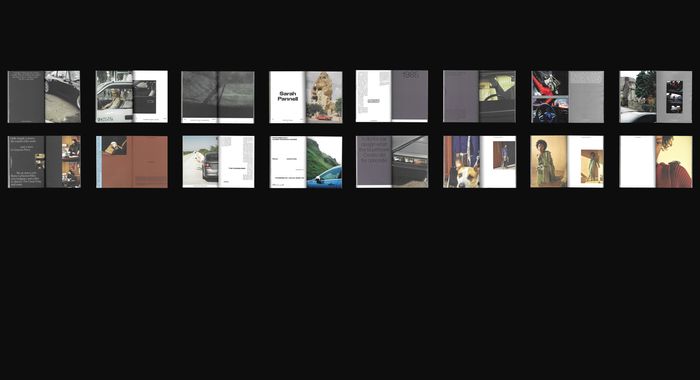“If it were an animal, it would probably be a Manta Ray. Long, flat, secretive and stylish. Actually, they’re probably just as rare — most people still haven’t seen one in the flesh.” So it began, the conversation with Dimitri Labis, lifelong collector of one of the most famous (but largely unknown) supercars in the world. His love affair with Aston Martin’s angular saloon started in 1982, when he caught a glimpse of one round the back of the Hyde Park Towers hotel in Knightsbridge. A teenager at the time, he grabbed his camera and took a shot, unaware that three decades later he’d be bidding for one on eBay.
Back in the eighties, the bedroom walls of most pubescent boys were peppered with posters of Kim Wilde and rear-engine sports cars, but Labis had other ideas and explains why, “I had this very atmospheric poster of a golden Lagonda, photographed at dusk in front of Alnwick castle, Northumberland. Even at that young age, I thought the shape was jaw-dropping. Each time I looked at it I was left stunned, baffled and speechless. I’d never seen anything so ‘futuristic’. It looks as dramatic today as it did when it was first unveiled at the Earl’s Court Motor Show in 1976. The Lagonda has a very special place in automotive design history and exists outside of fashion, which I think is the reason for its cult status — despite the fact that it’s a British car that has never been driven by James Bond.”
Misogynistic secret service agents aside, it’s impossible to feign indifference with this 4-door wedge of timeless modernity. The brainchild of concept car boffin William Towns (the man behind the Hillman Hustler, Microdot and the Minissima) it was the first car with an in-built onboard computer and touch-sensitive buttons. His flirtation with cutting edge digital features sent the development bill soaring, so much so, that the cost of prototyping his LED dashboard cost four times the budget that Aston Martin had set aside for the entire model. Once off the production line, Towns’s plans for a Kubrick-esque driving experience were oddly similar to the scene in 2001: A Space Odyssey, when Dave dismantles HAL’s mainframe — lots of warning lights and glitching LCD display screens.
Labis has never let the technical hitches deter him from driving the Lagonda and describes how, “luckily, there are plenty of engineers around these days who have the skills to put these things right. We have to remember that the instruments were manufactured using very basic, rudimentary electronic designs, which seemed so advanced at the time. Anything sci-fi related had far-reaching appeal in the late ‘70s and early ‘80s, so the Lagonda became (for some people) the archetypal, elusive and unattainable dream car. Only 645 were built over a 12-year period and each one was made from hand-beaten aluminium panels — it wasn’t the average family saloon.
Cashflow was seriously limited at Aston Martin by the time it was released and the deposits for the 80 or so orders that were taken on the stand at Earls Court were exactly what the company needed to get production line up and running. It took them three years to deliver the first models to their respective clients, who’d been patiently waiting for their four-wheeled £20,000 slice of the future.”
Regardless of the dodgy circuit boards, the Lagonda’s silhouette divides opinion. With an unparalleled design that reeks of spirit, optimism and poise, it did for car design what the Southbank Centre did for concrete. Compared to the characterless vehicles our roads are overrun with these days, we have the late William Towns to thank for being brave enough to show us an alternative. Pre-CAD, he generated those astounding razor-sharp corners with nothing but a HB pencil and a determination to create revolutionary angles and subtle folds. Figuring out a way of cramming in the 5.4 litre engine under the bonnet was a feat in itself; it had to be pushed right back towards the bulkhead to ensure balanced weight distribution. Pop-up headlights and a blink-and-you’ll-miss-it radiator grill were incorporated to ensure nothing interfered with the incredibly low hood-line.
Aesthetics aside, Labis is enthusiastic about the driving experience and confirms, “They have soft pile, carpeted interiors and seats that are electronically adjustable in all directions. On seriously long distances, the Lagondas are still such a comfortable drive — I’ve even slept in them! I love the sound of the engine, at least in the carburetted version. It’s a heavy car so of course, the acceleration isn’t that strong, especially since they were mated to a 3-speed gearbox.
If I were to choose a favourite, it would be my 13430 (they are all referred to by their chassis number). It’s finished in the elegant Cannock Black paintwork with Magnolia hide seats with black piping and sensational wooden veneer. The 13430 also has the rare and much sought-after CRT (cathode ray tube) dashboard, three TV screens and voice-operated warnings — all in working order. It has been used sparingly with just 43,000 miles on the clock, which means there are no rattles and the auto gearbox changes gears very smoothly — it handles better than any other wedge in my collection. When I bought it, the windows had been tinted, but I had that removed because I’m a purist and I like to keep the cars as close as possible to the original factory spec.
“You know,” Labis says wistfully, “I still have the photograph of the first one I saw behind that London hotel in the 1980s and it’s funny, because when I think back to buying my first one on eBay, I remember the listing said, ‘The day I purchased my Lagonda, I ticked an important box of my life’s to-do list.’ Four decades since it was launched and it’s still just as distinctive. It’s like Marmite — love it or loathe it, there has never been (and never will be) any other car quite like it.”
Car on loan from Dimitri Labis of Albion Classic Cars
Words: Leanne Cloudsdale
Photograph: James A Grant

